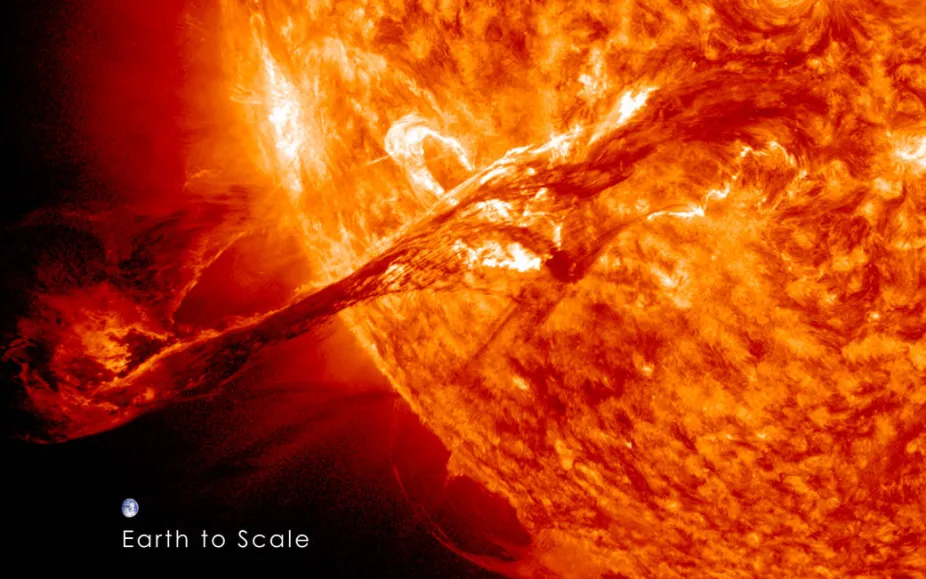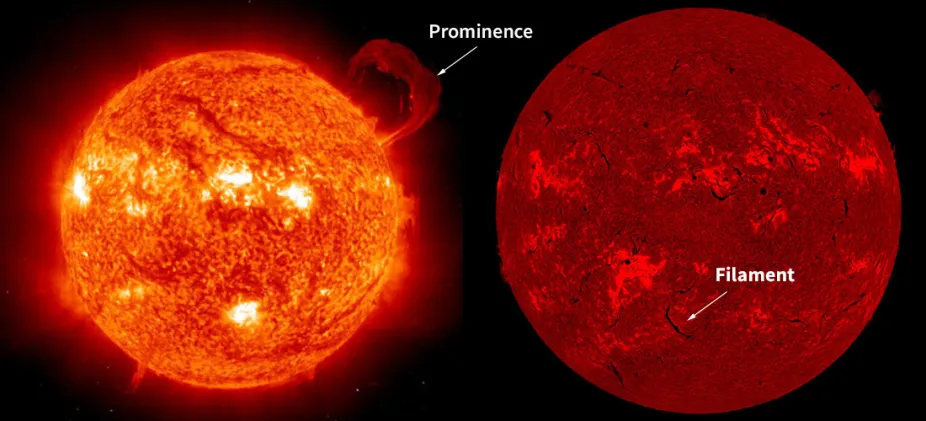Solar Prominences
Large, loop-like structures on the edge of the solar disk sometimes stand out brightly against the dark background of space. These enormous structures are called solar prominences.
Solar Prominences Come From Cooler Areas of the Sun
Although prominences appear to be very bright and hot, they are actually much cooler and denser than the surrounding plasma in the Sun's corona. Prominences are shaped by the Sun's complex magnetic field, often forming loops with each end anchored to the Sun's surface. Prominences are enormous, extending out for many thousands of kilometers.
Prominences can last for several days or up to several months. Some prominences erupt and break apart, giving rise to coronal mass ejections (CMEs).

A giant prominence eruption from Aug. 31, 2012 was captured by the AIA instrument on the NASA Solar Dynamics Observatory satellite.
NASA
Solar Filaments
Sometimes we see prominences against the bright background of the Sun itself, instead of at the edge of the Sun's disk. These prominences appear dark compared to the bright background of the Sun and are called solar filaments. However, prominences and filaments are really the same thing — arcs of plasma in the Sun's atmosphere held up by magnetic fields — just viewed from a different angle.

A solar prominence (left) appears bright against the dark backdrop of space, while a solar filament (right) appears dark against the bright Sun itself. Both structures are the same yet appear different due to the angle from which they are viewed.
UCAR